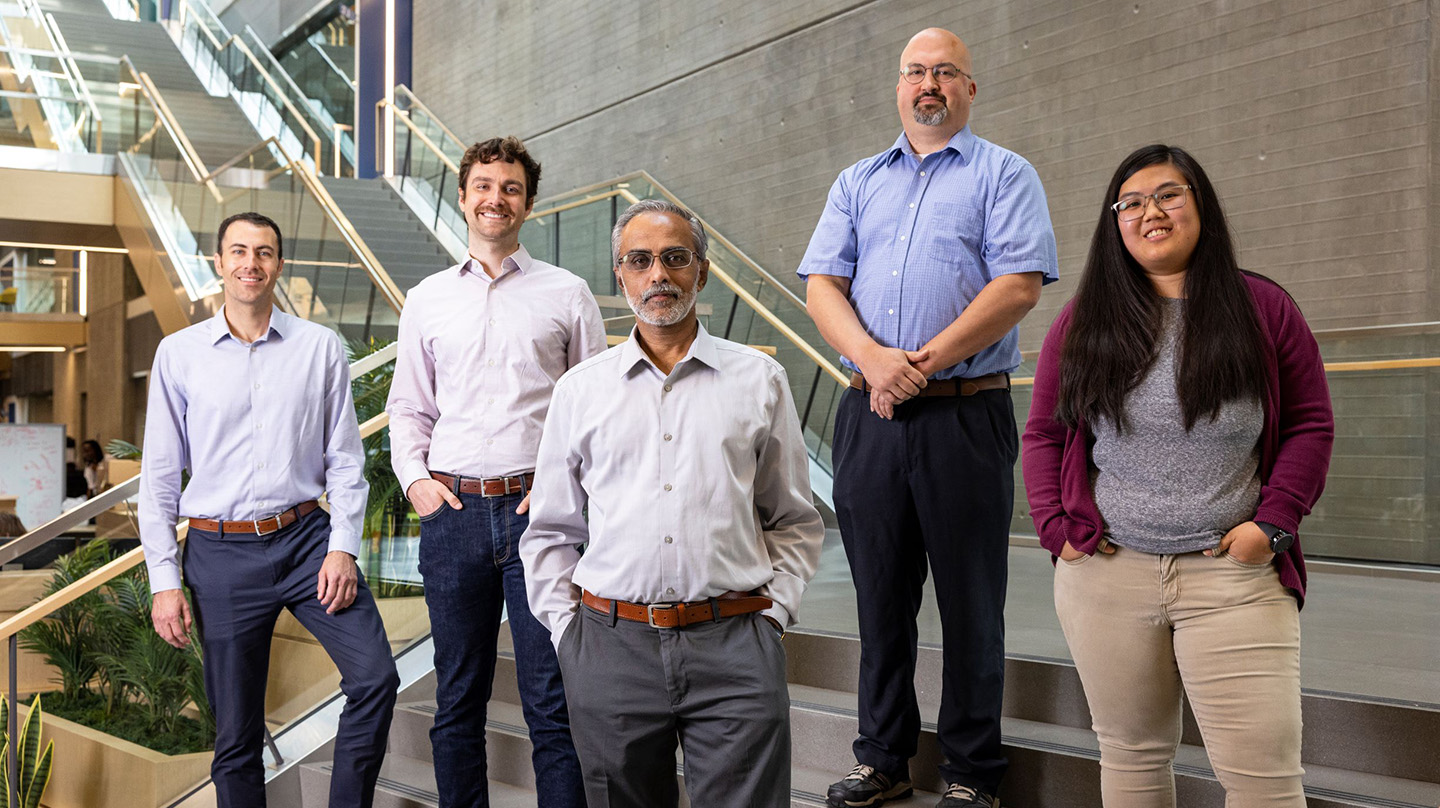TFTEC: Cool to the Touch
TFTEC development at APL started in 2016, when Rama Venkatasubramanian, a semiconductor device engineer and chief technologist for thermoelectrics research in APL’s Research and Exploratory Development Department, began developing advanced nano-engineered thermoelectric materials and devices for the Defense Advanced Research Projects Agency (DARPA) MATRIX program. APL developed advanced thin-film thermoelectric materials called Controlled Hierarchically Engineered Superlattice Structures (CHESS) to enable an entirely new set of transduction capabilities for several Department of Defense applications, including cooling high-performance computer chips and engine component electronics. APL’s Jeff Maranchi, Meiyong Himmtann, Jonathan Pierce, Richard Ung, Luke Osborn and Bobby Armiger supported TFTEC development. The CHESS-based TFTEC device was so successful that APL researchers began evaluating it for noninvasive trials to study the body’s ability to sense temperature through a prosthetic and phantom limb.
“In several recent trials, our wearable thin-film thermoelectric cooling device has been incredibly successful at delivering fast, intense cooling sensations that match the human body’s natural ability to sense temperature,” said Venkatasubramanian. “We’ve spent years in the Lab developing and optimizing this technology, and to see the immediate impact it has had on human users has been one of the most exciting developments of my career.”
Nature Biomedical Engineering recently published results from APL’s extensive TFTEC research for such sensory applications, which included lab-scale characterization, trials with amputees and a real-life demonstration of the approach. The study notes that the TFTEC elicited cooling sensations in the phantom limbs of all participants during a cold detection task, whereas traditional thermoelectric technology only did so in half of them — and the TFTEC did so eight times faster and with three times the intensity. Additionally, the TFTEC used half the energy compared to current thermoelectric devices. The device has also shown promise in haptics with new thermal modalities for augmented reality applications.
Learn more about the TFTEC.
Prometheus, Euclid and Seagull: Linking Needles in the Haystack
The Prometheus, Euclid and Seagull suite of machine-learning algorithms contains approximately 240 runnable library components. Implementation of the algorithms is agnostic to application domain, and the library has a modular structure that can be configured to accomplish different analytic goals.
APL has used Seagull and Prometheus in a variety of sponsored projects for the detection of anomalous activities. The library includes a highly parallelizable probabilistic model that beat 10 competing algorithms in detecting anomalies on an extensive benchmarking study done using 12 open-source data sets, as well as an innovative mixture model that can process mixed categorical-numerical data and beat three of the world’s most accurate unsupervised clustering algorithms.
Learn more about Prometheus and Seagull.

